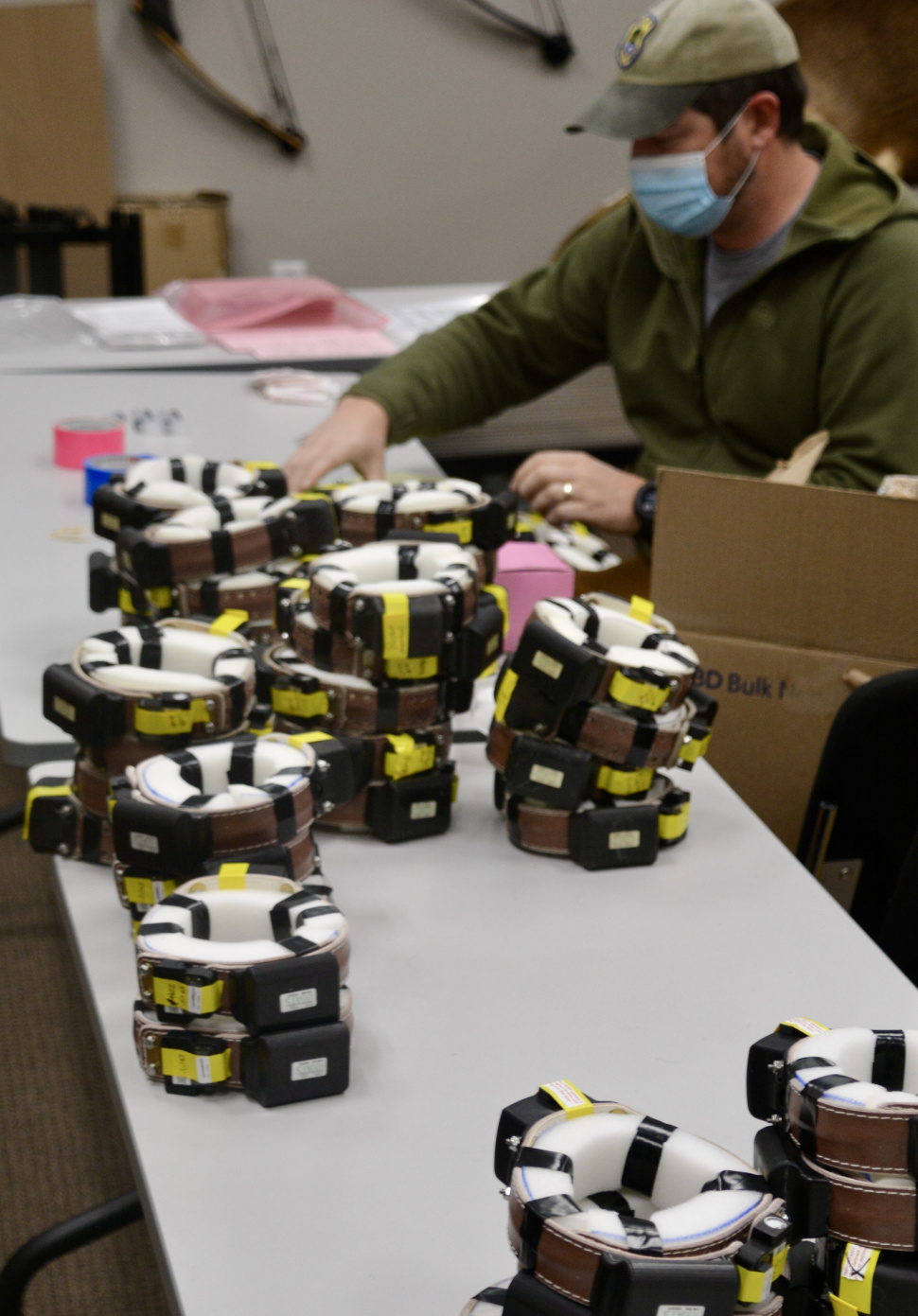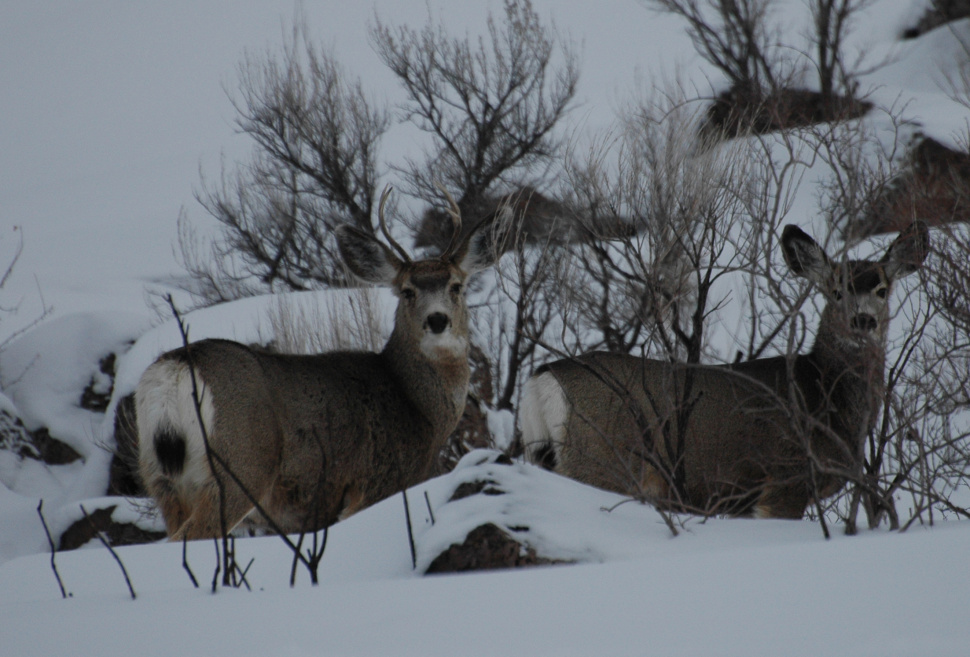Since prehistoric times, people have known that big game animals roam throughout Idaho. Deer and elk are typically seasonal migrants that inhabit mid and upper elevations spring through fall and then move onto winter range to escape deep snow and bitter cold.

But learning exactly where and when animals migrate, and how those movements fit into the larger question of “how many deer and elk are in Idaho” has dramatically changed in the last decade. Fish and Game biologists gained new knowledge that helps them understand more about seasonal movements of these important game animals and better manage their populations.
GPS paves the way
Until around 2015, most of the collars Fish and Game used to track the movements and mortality of marked deer and elk relied on very high frequency (VHF) radiowaves to transmit their location. Biologists had to be in close proximity to the collared animal to estimate its location with special antennas.

This tracking method worked fine when animals concentrated in a fairly small geographic location, such as on winter range, and weren’t moving long distances. But when animals dispersed in spring and summer, some making very large movements across multiple hunting units, it was difficult to repeatedly locate all the collared animals.
Better data, fuller picture
This meant biologists had good data where the animals were located for part of the year, but were uncertain about where they resided the rest of the year and how they used migratory paths between seasonal ranges.
As satellite-based, global positioning system (GPS) collar technology replaced VHF collars, biologists could accurately see when and where animals traveled across several seasons, and even multiple years, to get a much fuller picture of deer and elk seasonal movements and how individuals interact as a larger population.
“In the last seven years, we’ve exponentially grown our understanding of mule deer and elk movements.” said Fish and Game Wildlife Research Manager Shane Roberts. “That has helped us understand where animals are distributed during hunting seasons because it’s often not where we counted them during winter.”
More year-round information
This information helps biologists understand the timing of when herds migrate, and how they intermingle with other wintering populations in higher elevation habitats during the fall hunting seasons. This can help explain differences between what biologists see during winter population surveys and what hunters report in the fall, leading to more effective hunting season management.
Some assumptions confirmed, others refuted by GPS data
Roberts noted that some deer and elk herds remain in a general location and just move up and down in elevation between winter and summer. However, others may migrate over 70 miles across multiple hunting units.
Knowing how they move and the key areas they use helps biologists see the bigger picture.
“We use the movements of collared deer and elk to define populations within the state,” he said.
GPS collars showed that some deer and elk herds are fairly localized and segregated from other herds, while others mix heavily with neighboring herds during winter or summer.

They confirmed what biologists assumed about some animals, such as mule deer, which tend to be very predictable in their seasonal migrations and continue them across generations to very specific areas.
“Mule deer, overall, are more of a creature of habit,” Roberts said.
The GPS collar data has shown that elk, on the other hand, are more unpredictable with their movements, even between individuals within the same herd.
This is important because when you have certain number of animals in a certain location year after year, it’s easy to assume they’re the same animals and all going to act the same.
But GPS collars have shown that elk, in particular, will switch herds, and may shift their summer and winter ranges as well.
“Elk do their own thing, and they can be unpredictable in their behavior,” he said.
Counting on GPS data
“Knowing where a population is going to be at a certain time of year helps us decide where and how to do a survey, whether camera surveys or aerial surveys, and that’s changed because of GPS collars,” Roberts said.
Fish and Game is also using a combination of GPS collars and camera surveys in the Panhandle to better understand elk and white-tailed deer populations. The thick vegetation and unpredictable winter weather in these northern regions can make traditional winter aerial surveys difficult to execute. While deer and elk in central and southern Idaho congregate in semi-open, snow-covered country where animals are fairly easy to spot and count from the air.
The new camera and GPS data gives biologists an opportunity to mix current population data, such as harvest statistics, with other data to spot trends or trouble spots, and work to reverse potential population declines if they occur.
Having a better understanding of where deer and elk reside year round and how their movements change, or stay the same, helps biologists fine tune hunting seasons so they can offer the most opportunity while at the same time ensuring the long-term health of the deer and elk populations.
The State of Deer and Elk
Read the latest news, watch videos, ask us questions and more.


